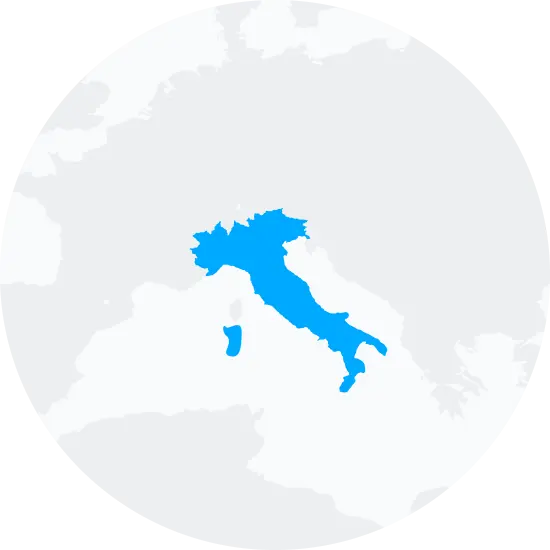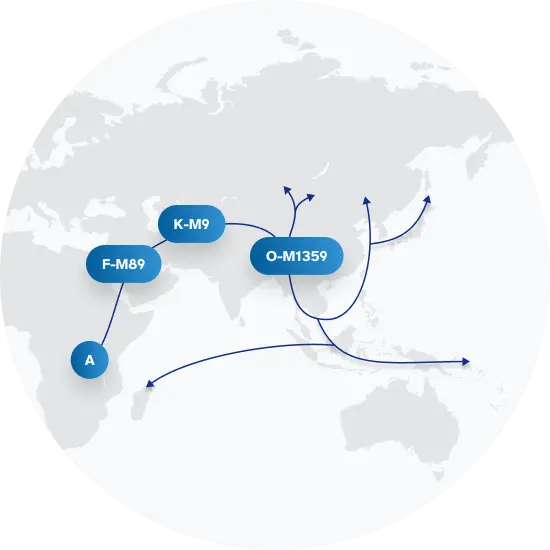Explore the Family Name Bongiorno
How common is the last name Bongiorno in the United States?
Based on the Decennial U.S. Census, the popularity of the surname Bongiorno saw a slight decrease in its rank from 14,472 in 2000 to 14,662 in 2010, representing a change of -1.31%. However, the actual count of individuals with the Bongiorno surname increased by 7.3%, from 1,891 to 2,029 over the same period. The proportion per 100k also declined slightly from 0.7 in 2000 to 0.69 in 2010, showing a -1.43% change.
| 2000 | 2010 | Change | |
|---|---|---|---|
| Rank | #14,472 | #14,662 | -1.31% |
| Count | 1,891 | 2,029 | 7.3% |
| Proportion per 100k | 0.7 | 0.69 | -1.43% |
Race and Ethnicity of people with the last name Bongiorno
In terms of ethnicity, the Decennial U.S. Census data shows that the majority of individuals with the Bongiorno surname identify as White, though this percentage decreased slightly from 96.77% in 2000 to 94.14% in 2010. The percentage of those identifying as Hispanic saw a significant increase, more than doubling from 1.80% in 2000 to 4.09% in 2010, while the percentage of Asian/Pacific Islanders also doubled from 0.32% to 0.64%. The proportion identifying with two or more races decreased from 1.06% to 0.84%. The data for Black and American Indian/Alaskan Native ethnic identities was suppressed for privacy.
| 2000 | 2010 | Change | |
|---|---|---|---|
| White | 96.77% | 94.14% | -2.72% |
| Hispanic | 1.8% | 4.09% | 127.22% |
| Two or More Races | 1.06% | 0.84% | -20.75% |
| Asian/Pacific Islander | 0.32% | 0.64% | 100% |
| Black | 0% | 0% | 0% |
| American Indian and Alaskan Native | 0% | 0% | 0% |
Bongiorno ancestry composition
23andMe computes an ancestry breakdown for each customer. People may have ancestry from just one population or they may have ancestry from several populations. The most commonly-observed ancestry found in people with the surname Bongiorno is Italian, which comprises 41.5% of all ancestry found in people with the surname. The next two most common ancestries are British & Irish (19.4%) and French & German (12.3%). Additional ancestries include Eastern European, Ashkenazi Jewish, Indigenous American, Scandinavian, and Spanish & Portuguese.
Ready to learn more about your ancestry? Get the most comprehensive ancestry breakdown on the market by taking our DNA test. Shop 23andMe
| ANCESTRY BREAKDOWN | COMPOSITION |
|---|---|
| Italian | 41.5% |
| British & Irish | 19.4% |
| French & German | 12.3% |
| Other | 26.8% |

Possible origins of the surname Bongiorno
Your DNA provides clues about where your recent ancestors may have lived. Having many distant relatives in the same location suggests that you may all share common ancestry there. Locations with many distant relatives can also be places where people have migrated recently, such as large cities. If a large number of individuals who share your surname have distant relatives in a specific area, it could indicate a connection between your surname and that location, stemming from either recent ancestral ties or migration.
Based on 23andMe data, people with last name Bongiorno have recent ancestry locations spanning a few countries, mostly in Italy, and the United Kingdom of Great Britain and Northern Ireland.
| RECENT ANCESTRY Location | Percentage |
|---|---|
| Calabria, Italy | 62.70% |
| Campania, Italy | 62.70% |
| Sicily, Italy | 62.70% |
| Apulia, Italy | 50.70% |
| Abruzzo, Italy | 46.30% |
What Bongiorno haplogroups can tell you
Haplogroups are genetic population groups that share a common ancestor on either your paternal or maternal line. These paternal and maternal haplogroups shed light on your genetic ancestry and help tell the story of your family.
The top paternal haplogroup of people with the surname Bongiorno is O-F2415, which is predominantly found among people with East Asian & Indigenous American ancestry. Haplogroup O-F2415 is descended from haplogroup O-M1359. Other common haplogroups include E-M183 and O-F2859, which are predominantly found among people with European and East Asian & Indigenous American ancestry.
The most common maternal haplogroups of people with Bongiorno surname are: N, H1, H. These most commonly trace back to individuals of European ancestry.
 Paternal Haplogroup Origins O-M1359
Paternal Haplogroup Origins O-M1359
Your paternal lineage may be linked to the Cham
One of the many populations harboring members of haplogroup O1b1a1a1a1 is the Cham ethnic group, a group of people who speak Austronesian languages in Mainland Southeast Asia. Austronesian languages make up a language family that is extremely large and widespread, comprising over 350 million people on islands such as Madagascar, Easter Island, and many others. However, Austronesian languages are less common on mainland Asia, with a notable exception being the Chamic language. Research suggests that ancestors of the Cham people migrated from Southeast Asian islands to the mainland around the year 500 BCE, and that early Cham populations quickly began mixing with indigenous southern Vietnamese populations. As a result, the Chamic language now has words that were borrowed from languages spoken by indigenous Vietnamese people. It is likely that an ancestral Kinh population was one of the populations that mixed with the Cham people shortly after their migration to mainland Asia.
Your maternal lineage may be linked to early Eurasian voyagers
As the members of haplogroup N migrated across the continents, new offshoots arose, many of which are major haplogroups in their own right. An early group traveled with members of M along the southern coast of the continent to Australia, where haplogroups O and S branched off. R, which stemmed from N within a few thousand years after the exit from Africa, dominates in Europe and western Eurasia. W and X, sister branches to R, are widespread across Europe and Central Asia, where all three were involved in both early colonizations and in the expansion of agriculture into those regions. A and B are widespread among both Asians and Native Americans, whose ancestors crossed a land bridge linking Siberia to Alaska more than 14,000 years ago.

What do people with the surname Bongiorno have in common?
Spoiler alert: it's complicated. People with the same last name are usually no more genetically similar than a randomly sampled group of people from the same population. That said, people with the same surname are more likely to have similar ancestries than randomly sampled individuals. The reason is the tendency of people with similar cultural or geographical backgrounds to preferentially mate with one another. That's why people who share a surname may be more likely to share traits and tendencies in common than people within the general population. Check out the percentages below to see the prevalences of tastes, habits, and traits of people with your surname compared with prevalences among 23andMe users.
Preferences
Traits
Habits
Wellness

Migraine
A severe headache characterized by intense pain, sensitivity to light and sound, and often accompanied by nausea and vomiting.
"Bongiorno" Surname 18.5%
23andMe Users 16.4%
Are health conditions linked to the last name Bongiorno?
The short answer is that, if there is an association between surname and health, it's usually more about your ancestry than your name. Individuals with a given surname are no more genetically similar than the general population but often have similar ancestries. The populations of people associated with those shared ancestries often have sets of genetic variations, also known as alleles, in common. Some of those alleles are associated with a greater likelihood of developing certain diseases.
Disease variant frequency by ancestry
Disease allele frequencies in populations associated with the surname Bongiorno are shown below. Important Note: not everyone with a disease allele will develop these health condition









